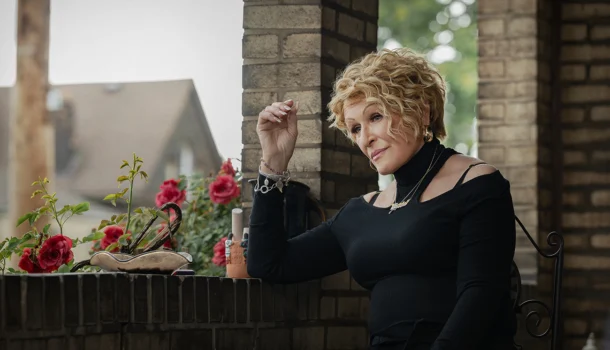There are narratives that not only evoke deeply rooted discomforts but magnify them to the point where the very notion of humanity begins to waver. In certain lives, reality takes the shape of an obsessive arena, populated by threats that multiply as the attempt to confront them proves futile. The figure of the hero — or the unwilling martyr — becomes a disposable piece in a game whose rules are written by forces beyond comprehension. Lee Daniels, among the few who dare to face this distorted logic head-on, constructs in “The Deliverance” an experience that unsettles by the sharpness of its intent. His gaze resists the lure of cheap spectacle: what drives him is the excavation of the most unruly corners of the human soul, where emotional pathologies disguise themselves as supernatural manifestations — and vice versa. The script, co-written with David Coggeshall and Elijah Bynum, delves into the disturbing threshold between faith, hysteria, and despair, taking as its starting point the real story of Latoya Ammons, who in 2011 claimed to have been targeted by invisible forces corrupting her home and her family. Rather than offering answers, Daniels chooses to broaden the scope of the questions.
The more time advances, the stronger the impression that life is not a linear journey of successive triumphs, but a spiraling experience, where each conquest reveals a new kind of abyss. Existence confronts us with the volatility of plans, the fragility of certainties, and the inevitability of pain as a constant presence. Nothing remains untouched: not affections, not beliefs, not even the contours of one’s own identity. What endures — and perhaps survives — is the ability to withstand collapse without surrendering to the vertigo. Suffering, in this light, is not a detour but the axis around which the most defining experiences of life revolve. And if there is something terrifying in this movement, there is also a singular kind of revelation: the realization that some truths only emerge when everything once solid has dissolved.
It is within this already rarefied atmosphere that Daniels places his protagonist: Ebony, a woman who carries exhaustion as both burden and armor. Her struggle is not limited to expelling demons from her home — be they literal or metaphorical — but to preventing the world from uncovering the magnitude of her fractures. Andra Day delivers a performance that refuses the comfort of the obvious. Her presence oscillates between withdrawal and eruption, between fragility and threat, always with technical precision that never dulls its visceral impact. At her side, Glenn Close shapes Alberta not as a passive observer, but as someone who intervenes — even if her motives remain ambiguous. The reunion between mother and daughter, mediated by illness and resentment, operates as a catalyst for all that had been buried. And when the boundary between affection and condemnation becomes indistinct, horror does not announce itself in screams, but in what is whispered.
The film’s strength lies less in its supernatural premise and more in Daniels’s ability to explore how evil seeps in — not just through the walls of a house, but through the power dynamics between emotionally wrecked individuals. Evil, here, is a diffuse presence, which can be interpreted as a restless spirit or as the result of decades of suppressed silence, veiled violence, and buried trauma. It is this ambiguity that lends the film its rare gravity: the viewer leaves not with certainty, but with the unsettling impression of having witnessed something that defies containment. Daniels understands — and makes it increasingly clear — that the true haunting does not reside in exorcisms, but in what is revealed once there is nothing left to conceal. The “deliverance” of the title, then, is no release. It is a painful, imprecise, and above all, unsharable process.
Film: The Deliverance
Director: Lee Daniels
Year: 2024
Genres: Horror/Drama/Mystery/Thriller
Rating: 8/10

